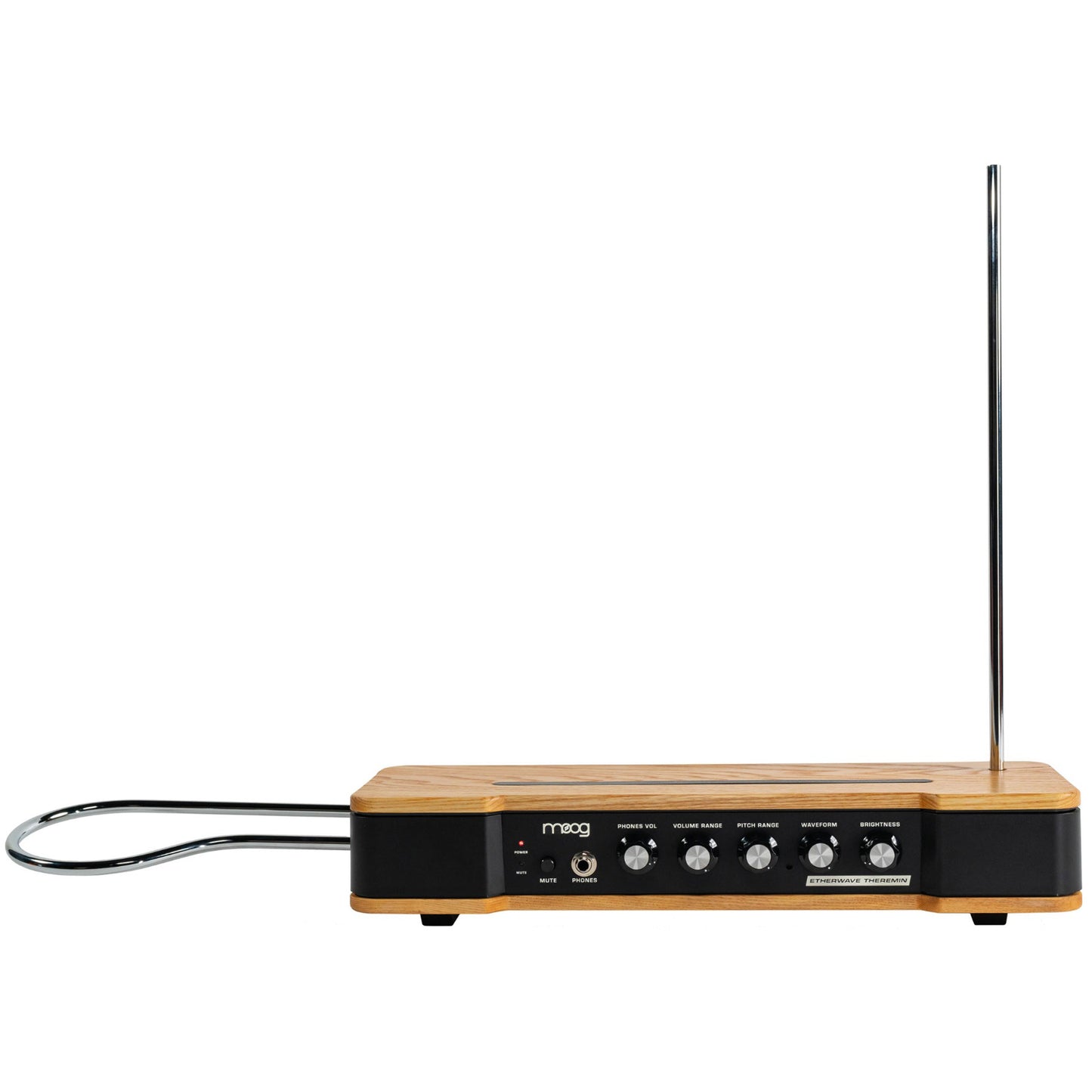


The Theremin? Or The Theremin!
A YOUNG MUSICAL GENIUS FROM PASADENA, CALIFORNIA
The Beach Boys were at the top of their game in 1965 when Brian Wilson surprised the band and fans when he announced he was no longer going to be a part of the Beach Boys' touring band. Wilson needed all the time he could get to write and produce the best possible material he could muster (and to have a sandbox added to his bedroom décor).
If the Beach Boys were going to keep pace with the Beatles, songs about High School pride, Surfing, Wooden Station Wagons, and big block hot-rod engines had to come to an end (although the ‘409 is still “real fine”). Brian Wilson finished work on the Beach Boy’s legendary “Pet Sounds” album in the spring of 1966. No expense was spared on the Phil Spector style wall of sound production, L.A’s finest session players, and exotic instrumentation. Orchestral instruments from strings, horns, and flutes to Timpani drums separate Pet Sounds from the Beach Boy’s previous albums, and Rock and Roll in general.
The entire album is brimming with “firsts” in the world of Rock and Roll, including the first use of the Theremin in pop music. The Track “I just Wasn’t Made for These Times” incorporates the first Pop/Rock use of the Theremin.
Pop/Rock/Indy/R&B and the Theremin
LED ZEPPELIN "WHOLE LOTTA LOVE"
Led Zeppelin needs no introduction, but sometimes the Theremin does. Zeppelin's leader and guitar hero Jimmy Page’s stage show can be as flashy as his playing. Using a Theremin just out of sight adds to the Page dynamic. During the breakdown part of the explosive Rock and Roll classic, Page waves his Right hand in the air, summoning the eerie sound of the Theremin. When played live, Page’s Theremin is run through a distorted 100-watt Univox head and 6x12 cab. Page looks like a mad Wizard commanding an unearthly screeching beast, as he tweaks the controls of his tape-driven echoplex, with his left hand, and pitch with his open right hand. While not particularly melodic, it’s a memorable part of Rock History.
THE WHITE STRIPES "LITTLE PEOPLE"
White Stripes alternative army of two used the Theremin on “Little People”. Jack White got a Theremin demo from Jimmy Page himself, in the Rock Guitar documentary “This Might Get Loud”, featuring White, The Edge, and Page.
THE BEACH BOYS "GOOD VIBRATIONS"
Brian Wilson first heard the exotic instrument watching “The Day the Earth Stood Still”. Reportedly, it frightened him. -not so much the sound, but the fact that “vibrations” are in the air around us at all times. Brian’s mom reminded him most are “Good Vibrations”. The Beach Boys “Good Vibrations” 45 was released in the winter of 1966, right after Pet Sounds. The song was originally intended for use in the abandoned “Smile” sessions. Good Vibrations was the most expensive song ever recorded at the time of its release, and still stands as the most famous use of the Theremin.
THE PIXIES "VELOURIA"
The Pixies use a Theremin to give a truly spacey vibe to the already far out love song, about a girl (or creature) named “Velouria”
CHARLES BRADLEY "CONFUSION"
Probably the funkiest song to ever use make use of the Theremin. Check out the Charles Bradley on this James Brown-inspired song track, “Confusion”.
THE ROLLING STONES "2000 LIGHT YEARS FROM HOME"
The Rolling Stones Psychedelic Magnus Opus “Their Satanic Majesties Request” album featured the Mellotron, Theremin, and Keef with a Wizards hat.

Over the years, bands from every style and generation rediscover the magic of the Theremin. Alongside the lush harmonies of the Beach Boys, experimental madness of Captain Beefheart, progressive kings Rush, heavy metal rockers Tesla, post-punk giants The Pixies, or the moody melodies of Garbage, the Theremin awaits its next artist to inspire.
Moog has continued to improve and tweak Leon Theremins' invention, while staying faithful to the original design. Built-in FX, Midi connectivity, and the pitch correcting Moog Theremini make playing the Theremin a little easier, and it can sound like anything you can imagine, from playful to serious, and any mix of both:
East truly collides with “West” as The Spaghetti western meets with the Russian invention. It’s probably safe to say that Leon Theremin, Bob Moog, Clara Rockmore, and Ennio Morricone would all stand in ovation for Theremin master Carolina Eyck’s version of “The Ecstasy of Gold” -The climax of the epic “The Good, the Bad, and the Ugly”
As long as artists and audiences continue to “discover” the Theremin and manufacturers like Moog continue to innovate, the Theremin will keep swooping in and delighting you when it's least expected.
Oh yes…. What became of Leon Theremin?
Theremin was allowed to return to the USA after the collapse of the Soviet Union. At 91 years of age Leon Theremin, Clara Rockmore, and Bob Moog all united in the same room, for the very first time. Who knows what’s next?


















